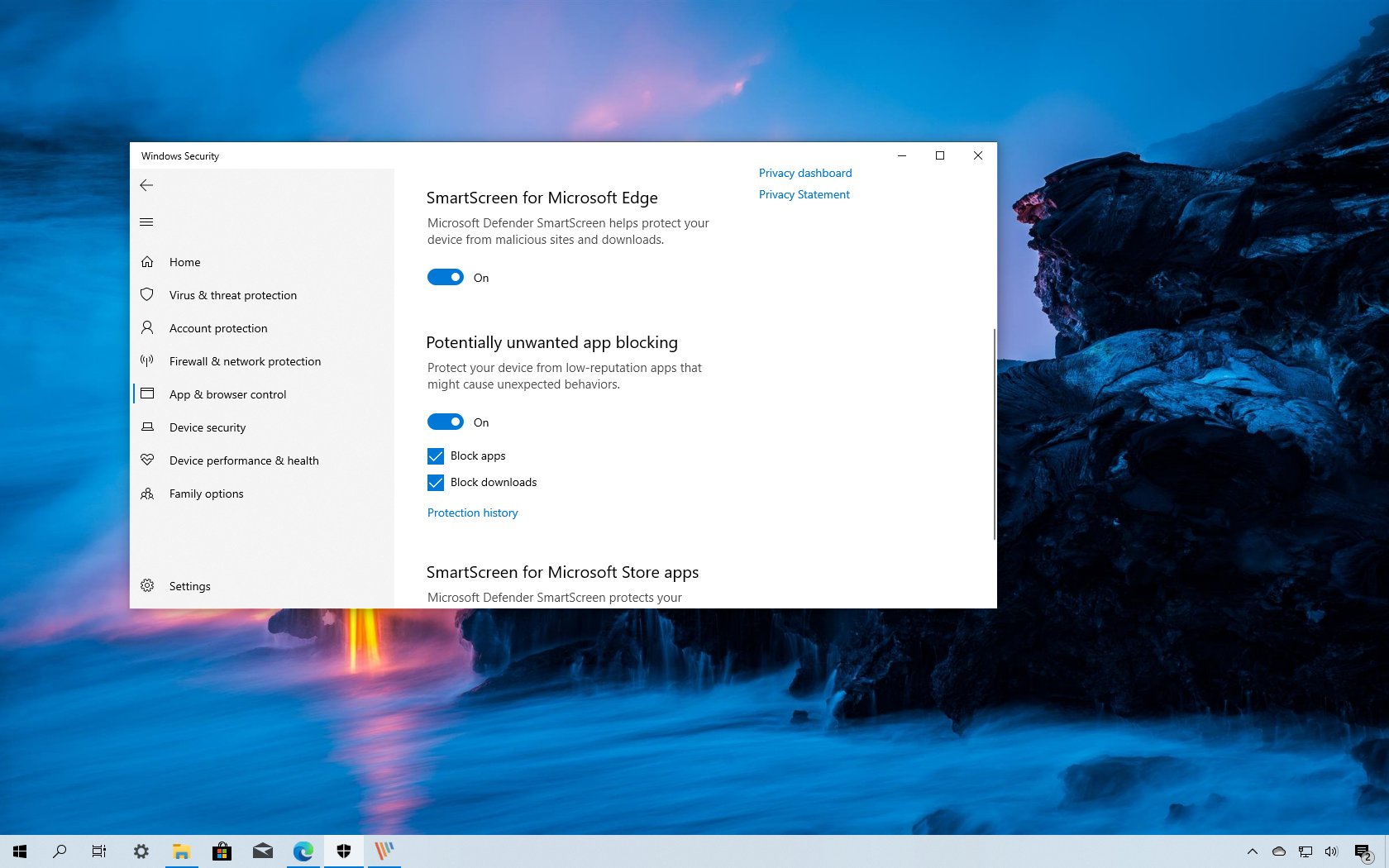With the May 2020 Update (version 2004), Windows Security is launching a new tool to safeguard your system against undesired programs in addition to Microsoft Defender Antivirus, which protects your device and files against viruses, ransomware, spyware, and other types of malware on Windows 10.
Potentially Unwanted Applications (PUA) blocking is the name of the feature. Once activated, it can identify and stop low-reputation apps—such as malicious or badly built apps—that can cause unexpected Windows 10 behaviors.
This post will teach you how to use the Windows Security app on Windows 10 to set (or disable) protection against potentially harmful apps.
-
Enable potentially unwanted apps blocking on Windows 10
-
View blocked potentially unwanted apps history on Windows 10
-
Disable potentially unwanted apps blocking on Windows 10
Enable potentially unwanted apps blocking on Windows 10
Follow these procedures to disable potentially harmful apps on Windows 10:
Windows Security Open.
On App & Browser Control, click.
Select the option for reputation-based protection settings.
Activate the toggle switch located under the “Potentially Unwanted App Blocking” section.
Turn on possibly undesirable Windows 10 apps.
If you only want protection from unwanted downloads, you can choose to clear the Block apps option.
If you only want protection against undesired app installations, you can choose to clear the Block downloads option.
After you finish the procedures, Microsoft Defender Antivirus will keep an eye on and block programs that have a negative reputation and those that could result in unexpected behaviors, like adware, cryptocurrency miners, badly coded apps, and more.
View blocked potentially unwanted apps history on Windows 10
Follow these procedures to view the history of prohibited harmful apps:
Windows Security Open.
On App & Browser Control, click.
Select the option for reputation-based protection settings.
Protection settings based on reputation
Click the “Protection history” option under the “Potentially undesired app blocking” section.
Option for PUA protection history
Verify the applications that PUA protection has blacklisted.
History of PUA protection
The apps that the antivirus has restricted using the protection feature will be visible to you once you’ve finished the instructions.
Disable potentially unwanted apps blocking on Windows 10
Use these procedures to stop Windows 10 from banning possibly undesirable apps:
Windows Security Open.
On App & Browser Control, click.
Select the option for reputation-based protection settings.
Protection settings based on reputation
Turn off the toggle switch located under the “Potentially Unwanted App Blocking” section.
Turn off any possibly undesirable Windows 10 apps.
After you finish the procedures, Windows 10’s PUA protection will be turned off.
You may enable a similar function in Microsoft Edge from the privacy and services settings, in addition to Windows Security’s ability to ban harmful and badly written apps.



